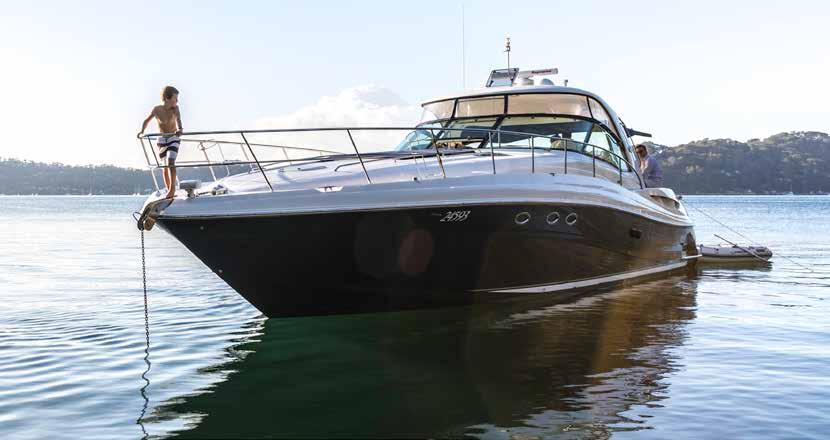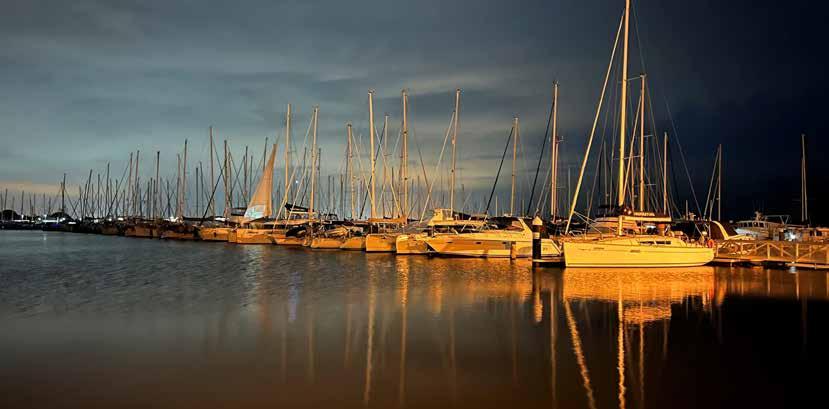
7 minute read
BOAT SHARE MODELS RESHAPING THE AUSTRALIAN BOATING INDUSTRY
by Tim Stackpool
It’s no surprise the Australia boating landscape is undergoing a significant transformation. While traditional boat ownership remains a cornerstone of the industry, innovative models such as boat sharing, clubs, memberships and syndication are gaining traction.
These alternatives are not just changing how people access the water, they’re creating new opportunities and challenges for the entire boating sector.
This emerging model affecting all sectors from manufacturers to retailers, is forcing businesses to adapt in order to successfully navigate this wave of change.
Boating has a strong tradition in Australia but real or otherwise perceived barriers such as upfront costs, storage concerns, and maintenance responsibilities give second-thoughts to new enthusiasts. Boat sharing and membership models are one method of dismantling these obstacles, somewhat democratising access to the water.
Urban dwellers, who often lack space for boat storage and time for regular maintenance, can find these models particularly attractive. By offering flexible access to a range of vessels without the burden of ownership, boat clubs and sharing platforms are tapping into a significant market segment.
These models also serve as an entry point for those curious about boating but hesitant to commit to a purchase. They allow individuals to sample various boat types and styles, gaining experience and confidence on the water. This ‘try before you buy’ approach has potential to expand the market for boat sales in the long term, should members choose to move from shared to sole ownership.
Andrew Young from Boating Syndication Australia sees further potential. “I think boat sharing makes it possible for inland buyers to own a boat, or part of a boat as an option. Most inland clients would not own a boat outright as they would never see the value in all the holding costs versus time used,” he says.
Phil Pitt at Pacific Boating feels the same way. “People are used to subscription models now, such as GoGet and Netflix. Our model appeals in a similar way to those who have owned their own boat and no longer have the time, space or inclination to hassle with the ownership issues but still love to enjoy life on the water, along with those who don’t have the disposable income to purchase, or those who may want to try a boating lifestyle before they buy.”
Matthew Lloyd from Book My Boat believes share boating keeps the purchasing of new boats more attractive, saying, “In terms of new boat sales, the Book My Boat business model is having a positive impact on new boat sales. At the time of purchase, and if applicable to the boat, the new boat owner may choose to register their boat commercially through the Non-Survey Scheme which allows them to generate an income using their boat for Hire & Drive operations. Don’t forget there are multiple tax incentives to owning a commercially registered boat including claiming the depreciation using the instant asset write off and tax-deductible expenses on all costs associated with boating.”
For the industry, this shift presents both opportunities and challenges. Manufacturers and retailers now need to consider how they engage with these new boaters, potentially developing products and services tailored to the sharing economy. Boats designed for frequent, varied use by multiple operators might become an entirely new product category.
A Rising Tide Lifts All Boats
While some may view boat sharing as a threat to traditional sales models, a closer look reveals possible significant benefits for various sectors of the marine industry.
Liam Webb at GoBoat looks to individuals expressing an early interest in boating. “Our product is targeted at first-time or entry level boaters, so if anything, it is more likely to expand the market for boat sales and boat share services.”
The GoBoat product is unique, offering only electric powered vessels, “Our goal has always been about making Aussie waterways more accessible,“ Liam adds. “So far almost 500,000 people have come aboard over seven years, so there is clearly demand for this sort of entry point to boating across the country.”
Where the market wants such an experience, boat sharing platforms and clubs often require larger fleets of vessels, potentially increasing bulk orders for manufacturers. These fleets also tend to be updated more frequently than privately owned boats, ensuring a steady demand for new models. Dealerships can benefit by partnering with boat clubs or even starting their own sharing programs. This allows showcasing the range to a broader audience, potentially converting club members into future boat owners.
The increased use of shared boats likely requires more frequent maintenance and repair services. Marinas hosting boat clubs may also see higher demand for berths, increased foot traffic, and a boost to services such as fuel sales, chandlery purchases, and food and beverage consumption.
Brett Bolton at Freedom Boat Club sees the share boating business as creating its own economic ecosystem, saying, “Activation of the marina with increased foot traffic, food and beverage, utilisation of marine trades and other services all leverage off boat sharing. Our operation also cycles its boats every two to three years, so boat manufacturers and dealerships benefit from more product being sold and being in front of the eyeballs of the boating marketplace.” This was an obvious strategy for Brunswick who acquired Freedom Boat Club in 2019. Brunswick now sells its boat models, engines, electronics packages and chandlery items to its franchise network, providing an end-to-end vertically integrated sales solution.
Navigating Towards a Greener Future
The boating industry, like many others, is under increasing pressure to address environmental concerns. Shared boating models do offer a unique opportunity to promote sustainability within the sector. By increasing the usage rate of individual boats, sharing models effectively reduces the carbon footprint per person sharing in the boat. Instead of multiple boats sitting idle for extended periods, a single shared vessel serves numerous people, maximising its use and efficiency. Some existing boat clubs like GoBoat obviously include these messages in their marketing. “Our boats are often the first experience people have with electric boating, which we find can be a great way of opening the conversation about the environmental impacts of traditional boating,” Liam Webb says, “as well as alternatives and efforts to reduce that impact”. With conventional engines, a good maintenance regime and improved efficiency helps answer the sustainability conversation. “Due to the frequency of servicing and the high level of maintenance that we undertake, the boats run more efficiently thereby consuming less fuel,” indicates Pacific Boating’s Phil Pitt. “In our future I would see us endeavouring to compensate for emissions by supporting projects that reduce carbon dioxide from the atmosphere along with ongoing support for the development and adoption of new and innovative technologies that reduce emissions.”
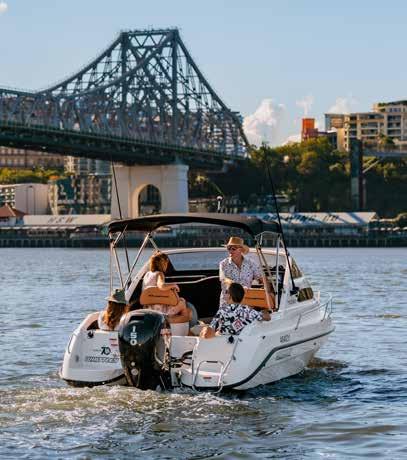
Negotiating Choppy Waters
While boat sharing models offer numerous benefits, they also present challenges the industry must address to ensure longterm success and integration into the broader marine sector. In terms of logistics, managing a fleet of shared boats requires sophisticated systems for scheduling, maintenance tracking and member communications. Developing or acquiring the necessary technology can be a significant investment for boat clubs and sharing platforms.
Ensuring a positive experience for all members while maintaining the condition of the fleet is obviously crucial. This includes managing expectations, providing adequate training, and handling disputes or damages. The shared nature of these models raises complex liability issues. Determining responsibility in case of accidents or damages can be challenging, requiring robust insurance policies and clear member agreements.
To address these challenges, the industry needs to look to innovative solutions. Advanced booking and fleet management software is required that optimises vessel utilisation and maintenance schedules. Implementation of IoT (Internet of Things) devices on boats can monitor usage, performance and maintenance needs in real-time.
“Freedom Boat Club has a bespoke online booking portal which simplifies the boat booking process and allows for operational planning and rostering,” said Brett Bolton.
To address some aspects of safety, Freedom Boat Club has also installed ‘Nebo’ boat trackers which provide all of the fleet’s exact location, headings, speed and historic tracks. “This provides enormous safety measures and value add capability for us to provide feedback and information to our members while out on the water,” says Brett Bolton. “It also lets us know if we have time for another coffee before the boats return home from their day out on the water.”

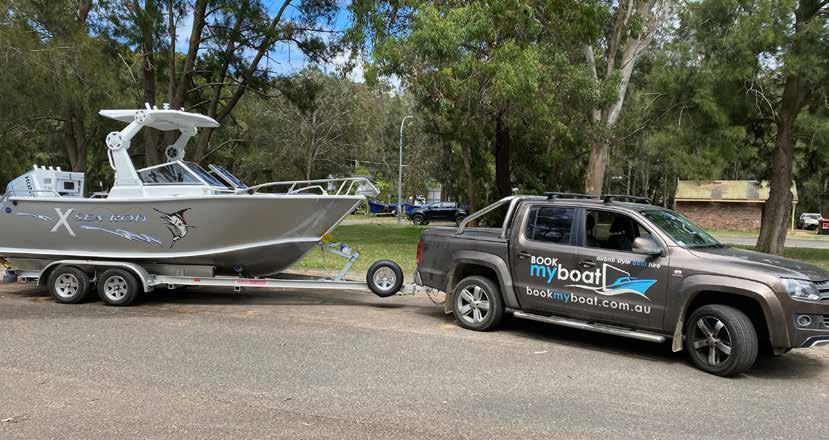
The Course Ahead
The opportunity for increased boat sharing and club models represents a significant opportunity in the Australian boating industry.
Matthew Lloyd from Book My Boat identifies the big challenge. “It has been an extremely tough road to establish a boat hire marketplace. Insurance has been the greatest difficulty as typical insurers don’t currently have a product to support the ‘Hire & Drive’ share economy.” Other challenges include educating the boat owner and dealer networks on the benefit of the share economy.
For manufacturers, share models do provide a chance to showcase products to a broader audience and potentially develop new lines tailored to the sharing economy. Retailers and dealerships can expand their services by partnering with or establishing their own boat clubs. Marinas and service providers stand to benefit from increased boat usage and the associated demand for their services.
These new models align well with growing consumer trends towards sustainability and experience-based consumption. By embracing and adapting to these changes, the Australian marine industry can ensure its continued relevance and growth in the years to come.
“Building our GoBoat business as digital first has been critical, as a relatively low-cost activity we rely on volume during peak periods to remain profitable so need our systems to be as efficient as possible,” says Liam Webb. “This applies in every aspect of our business, from customer bookings and waivers to AMSA compliance and business intelligence.”
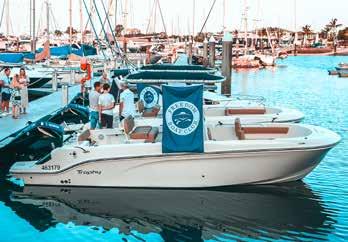
For some, it’s been a long haul. “Of course it has been a 20 year learning curve for Pacific Boating,“ says Phil Pitt. “We may be considered a leisure industry but it has taken a lot of blood, sweat and tears to get us to where we are today.”
Collaboration between traditional industry players and innovative boat sharing platforms will be key. Working together, a further accessible, sustainable, and vibrant boating culture can benefit businesses and boating enthusiasts alike.
“Share boat concepts can be the incubator sandpit for innovation as boats get used at a far greater rate and are professionally managed,” says Freedom Boat Club’s Brett Bolton. “The changing over to renewables including hybrid and battery technologies for example will greatly benefit from the testing grounds of the share boat companies.”
Ultimately, the boating industry in Australia is not just about selling boats, it’s about selling the boating lifestyle in all its forms. As an industry, the opportunity is to ride this wave and steer towards a more inclusive and sustainable future for Australian boating.
